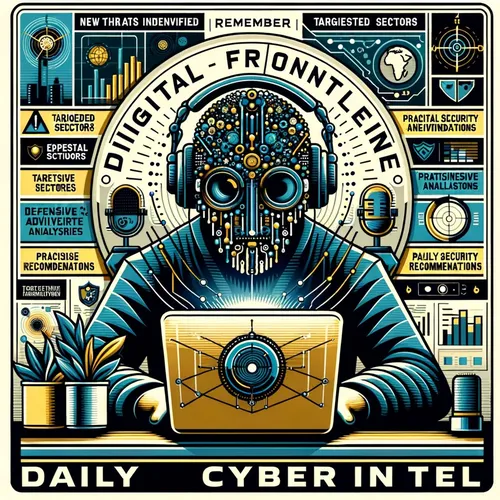Silk Typhoon Unleashed: China-Linked APT Group Wreaks Havoc Across North America
- Author
- Quiet. Please
- Published
- Sun 24 Aug 2025
- Episode Link
- https://www.spreaker.com/episode/silk-typhoon-unleashed-china-linked-apt-group-wreaks-havoc-across-north-america--67497619
This is your Digital Frontline: Daily China Cyber Intel podcast.
Ting here, lighting up your Digital Frontline fix. Blink twice, listeners—Chinese cyber activity has been frying the wires over the past 24 hours. Let’s punch into the main threat first: CrowdStrike just flagged an uptick in attacks from Silk Typhoon, the China-linked APT group also known as Murky Panda. These sneaky folks are exploiting both n-day and zero-day vulnerabilities to snag system access across North America—that means fresh and recycled security holes aren’t safe anywhere near your perimeter, especially if you’ve slacked off patching this weekend.
Who are they targeting? High-value honey pots: healthcare, finance, critical infrastructure, and some juicy tech startups slammed alongside. On the health front, DaVita came forward with news that ransomware pirates breached their network—stealing personal and health data for nearly 2.7 million people. If you’re in health tech, compliance is now your baseline, not your shield.
It’s not only the big boys under the crosshairs. CERT/CC sent out an advisory about flaws in Workhorse Software, used by hundreds of U.S. cities and towns. If your local government or civic tech org runs Workhorse, treat this as a DEFCON-level heads-up: exposure is rampant, and pivots by Silk Typhoon from municipal to private sector can be as quick as a single phishing click.
Meanwhile, tech supply chain drama continues. Just yesterday, tensions between the U.S. and China spiked after Commerce Secretary Howard Lutnick made, let’s say, “frosty” remarks on national TV about Nvidia’s H20 chip. In retaliation, Chinese regulators gave a hard shove for domestic adoption of Chinese chips—quietly tightening cyber controls and fast-tracking AI self-sufficiency. That means fewer American tech fingerprints inside key Chinese systems, and potentially new hacking tools crafted around homegrown chip architectures.
Let’s talk defensive playbook: patch everything, especially public-facing systems, and don’t gamble on old credentials. Endpoint protection vendors are dropping updates targeting Silk Typhoon’s current exploits—delay patching and you’re basically holding a piñata stick at your own network. If you use Workhorse Software, audit your access lists and nab CERT’s mitigation steps ASAP.
Phishing remains the bread-and-butter, but Silk Typhoon is getting fancier. According to Security Affairs, they’re now bundling exploits with time-delay payloads—meaning attacks can detonate days after initial compromise for maximum chaos. Businesses must monitor not just what happens, but also what *might* have happened a week ago with fresh logs and SIEM tuning.
Quick expert tip? Jacob Ideskog from Curity warns that as lightweight LLMs are getting deployed across incident response, they can help cut reaction times—but only if your data inputs are clean and code is locked down against hallucinations.
Practical takeaway: double-check your anti-ransomware strategy, segment your networks, roll those backups, and keep your VPN and endpoint suites patched with the absolute latest from your vendor.
Thanks for tuning in to Digital Frontline with Ting—your fun-infused shot of cyber Intel on all things China. Smash that subscribe so you never miss a byte. This has been a quiet please production, for more check out quiet please dot ai.
For more http://www.quietplease.ai
Get the best deals https://amzn.to/3ODvOta
